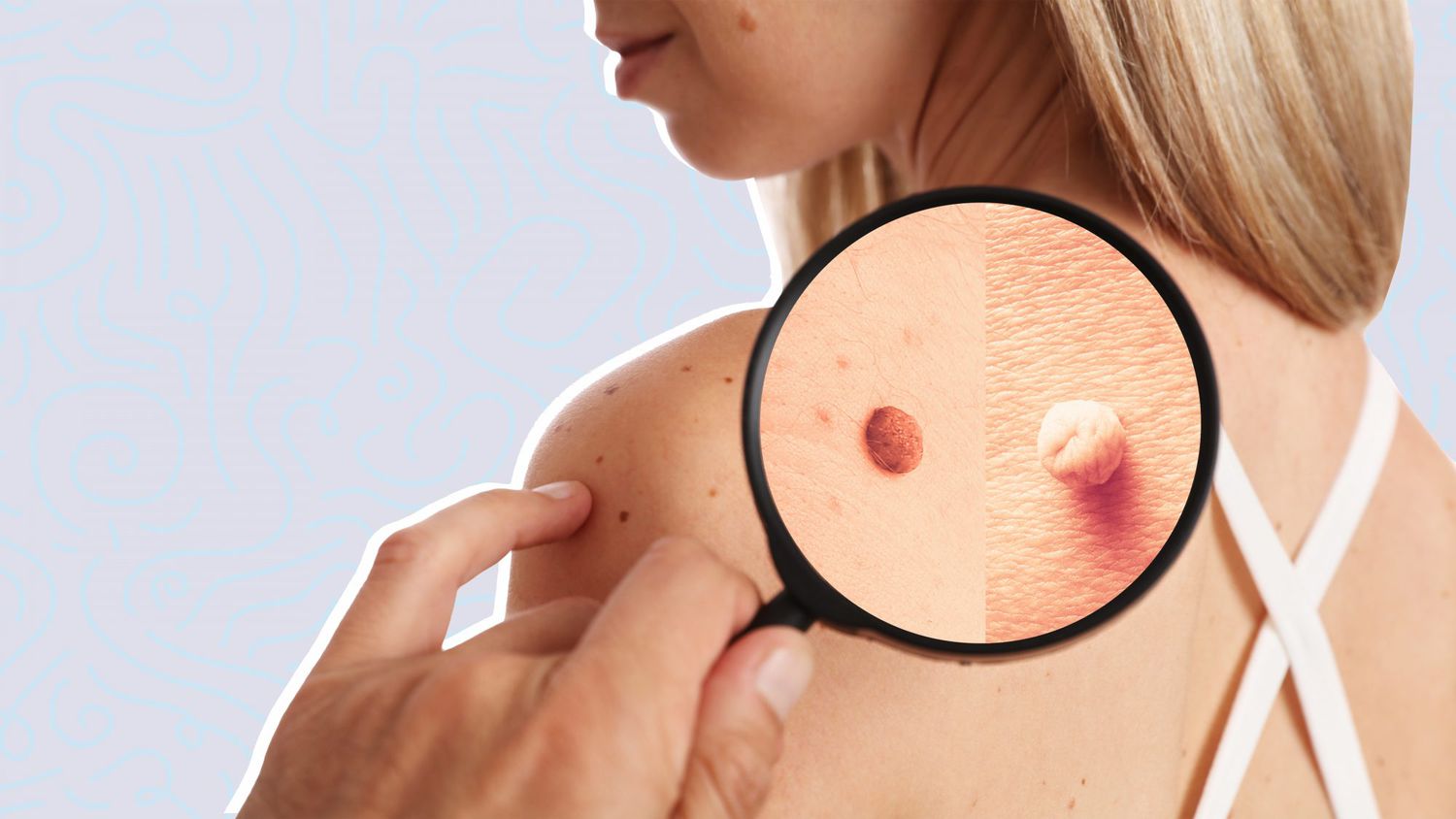Introduction
Have you ever noticed small, soft, skin-colored growths on your body? These are commonly known as skin tags, and while they’re usually harmless, they can be a source of discomfort and self-consciousness for many people. Whether they appear on your neck, armpits, or eyelids, skin tags are more common than you might think. Although these benign growths don’t pose a serious health risk, understanding their nature, causes, and treatment options is key to managing them effectively.
In this comprehensive guide, we will dive into everything you need to know about skin tags: from their development to removal techniques, and even preventive measures to avoid future occurrences. By the end of this article, you’ll have a clearer understanding of how to manage and treat skin tags with confidence.
What Are Skin Tags?
Skin tags, scientifically known as acrochordons, are small, soft, flesh-colored growths that hang off the skin by a thin stalk. They can vary in size from a few millimeters to about 1 centimeter in diameter and are usually painless. Skin tags often appear on areas of the body where skin folds and experiences friction, such as the neck, armpits, groin, and under the breasts.
While skin tags are entirely benign and non-cancerous, they can sometimes become irritated, especially if they’re located in areas prone to rubbing or friction. People of all ages can develop skin tags, but they’re more common in middle-aged and older adults.
Causes of Skin Tags: Why Do They Form?
Understanding the causes of skin tags is crucial for those looking to prevent or minimize their occurrence. While the exact cause isn’t fully understood, several factors are associated with their development:
- Friction: Skin tags tend to form in areas where the skin rubs against itself or clothing. This is why they are frequently found in skin folds or high-friction areas like the neck, armpits, and groin.
- Genetics: Some people are genetically predisposed to developing skin tags. If your parents or grandparents had them, you may be more likely to develop them as well.
- Hormonal Changes: Hormonal shifts, particularly during pregnancy, can increase the likelihood of developing skin tags. Pregnant women often notice an increase in skin tags due to hormone fluctuations and weight gain.
- Obesity: Being overweight or obese increases the risk of skin tags, as individuals with more body fat tend to have more skin folds, leading to increased friction and the formation of skin tags.
- Diabetes and Insulin Resistance: People with diabetes or insulin resistance may be more prone to skin tags. This correlation is not yet fully understood, but some studies suggest a link between skin tags and elevated insulin levels.
- Age: Skin tags are more common as people age, particularly after the age of 40. This may be due to changes in the skin’s elasticity and the way the body processes insulin and other hormones.
Common Locations of Skin Tags
Skin tags can appear anywhere on the body, but they are most commonly found in areas where skin-to-skin or skin-to-clothing friction occurs. The most common locations include:
- Neck: Often found in the folds of the neck, especially in people who wear tight collars or jewelry.
- Armpits: Frequent movement and friction in the armpit area make it a common spot for skin tags.
- Groin: The groin area, particularly where underwear or pants rub against the skin, is another hotspot.
- Eyelids: The thin skin around the eyes is prone to the development of skin tags.
- Under the Breasts: Women often find skin tags in the folds of skin under their breasts, especially if they wear tight bras.
Are Skin Tags Harmful?
One of the most frequently asked questions is whether skin tags are dangerous. The good news is that skin tags are typically harmless. They are non-cancerous growths, and they do not pose any health risks. However, some individuals may choose to have them removed for cosmetic reasons or because they become irritated or uncomfortable.
It’s important to note that skin tags can sometimes be mistaken for other skin conditions, such as warts or moles, which could potentially be more serious. If you notice rapid changes in the size, color, or shape of a skin growth, it’s wise to consult a dermatologist to rule out other skin conditions.
Treatment Options for Skin Tags
While skin tags don’t require medical treatment, many people choose to remove them, especially if they are in visible areas or causing discomfort. There are several safe and effective ways to remove skin tags:
1. Cryotherapy (Freezing)
Cryotherapy involves freezing the skin tag using liquid nitrogen, which causes the tag to fall off after a few days. This is a common procedure performed by dermatologists.
2. Cauterization (Burning)
In this method, a healthcare provider uses heat to burn off the skin tag. This technique effectively removes the skin tag and prevents bleeding during the procedure.
3. Surgical Removal
A dermatologist can also cut off skin tags using sterile scissors or a scalpel. Local anesthesia is usually applied to minimize discomfort during the procedure.
4. Over-the-Counter Solutions
There are various over-the-counter skin tag removal products available in pharmacies. These treatments typically use freezing or topical solutions to eliminate skin tags over time.
5. Home Remedies
Some people opt for home remedies, such as applying tea tree oil, apple cider vinegar, or tying off the skin tag with dental floss to restrict its blood flow. However, these methods are not always safe or effective, and professional removal is usually recommended for larger or stubborn skin tags.
Can You Prevent Skin Tags?
While it’s not always possible to prevent skin tags, there are steps you can take to reduce your risk, particularly if you’re prone to developing them.
1. Maintain a Healthy Weight
Keeping your weight in a healthy range can reduce the number of skin folds and friction on the skin, which in turn lowers the chances of developing skin tags.
2. Minimize Friction
Wearing loose-fitting clothing and avoiding tight collars or jewelry can help reduce skin friction. Keeping the skin clean and dry, especially in areas prone to chafing, can also be beneficial.
3. Manage Underlying Health Conditions
If you have diabetes or insulin resistance, managing these conditions through proper diet, exercise, and medication can help reduce your likelihood of developing skin tags.
4. Exfoliation
Regular exfoliation can prevent dead skin cells from accumulating and creating friction, which may contribute to the formation of skin tags.
When to See a Dermatologist
While most skin tags are harmless and don’t require medical attention, there are certain situations where you should consult a dermatologist. If you notice any of the following, it’s time to seek professional advice:
- Changes in Appearance: If a skin tag changes in color, size, or shape, it’s important to have it checked out to rule out other skin conditions.
- Bleeding or Irritation: If a skin tag becomes irritated, starts bleeding, or causes pain, consult a healthcare provider.
- Uncertain Diagnosis: If you’re not sure whether a skin growth is a skin tag or something else, a dermatologist can provide an accurate diagnosis.
Conclusion
Skin tags may be harmless, but they can still be a source of discomfort or cosmetic concern for many individuals. Understanding the causes, symptoms, and treatment options available can help you manage them effectively. Whether you choose to remove them for aesthetic reasons or simply want to prevent future skin tags from forming, there are various ways to maintain healthy skin and avoid unnecessary irritation.
If you’re dealing with multiple or bothersome skin tags, don’t hesitate to consult a dermatologist. A professional can help you determine the best course of action and provide safe removal options tailored to your needs.
Call to Action
Are you struggling with persistent skin tags or curious about safe and effective removal options? Reach out to a dermatologist today to explore personalized treatment solutions that suit your skin type and lifestyle. Your skin deserves the best care, and a professional can help guide you in maintaining a smooth and healthy complexion.














